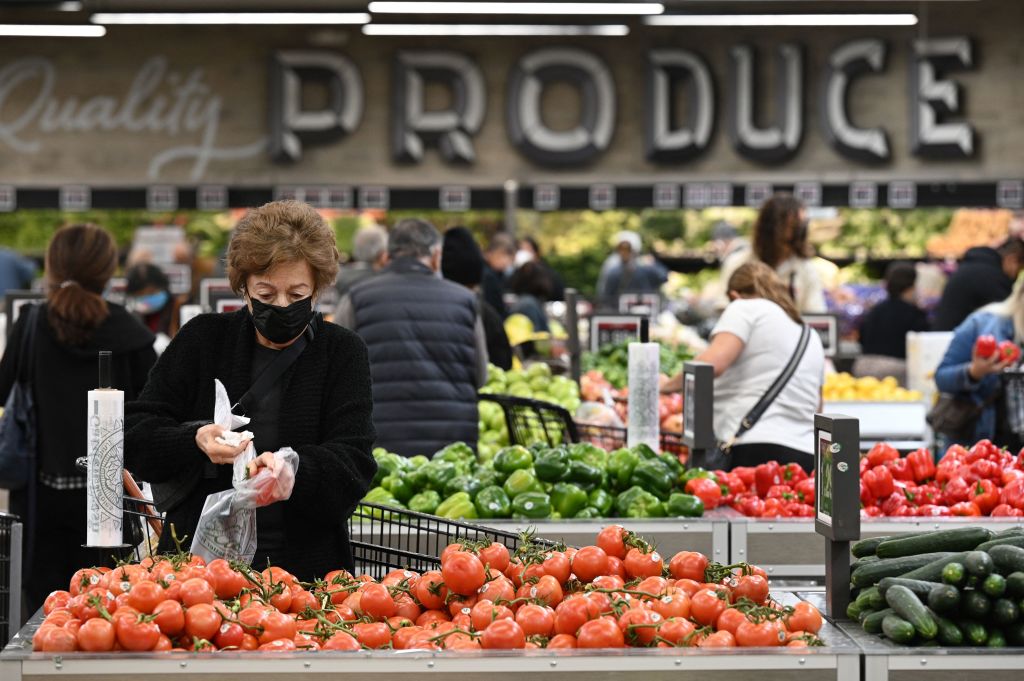Americans have seen a significant rise in the cost of groceries throughout 2021. Now economists are warning that trend won’t be changing any time soon.
With inflation rates hitting record highs in 2021, that rippled throughout the economy and directly impacted consumers.
The consumer price index climbed seven percent in 2021, which was the largest 12-month hike since 1982, according to the Bureau of Labor Statistics data.
This overall inflation is directly hitting the cost of food. Goldman Sachs just reported new projections for how groceries prices will start spiking soon, CNN reported.
The economists from the Wall Street investment firm reported that the food-at-home category of the CPI will likely increase by another five to six percent this year. Already there has been a six percent jump in food commodity prices and a significant increase in the costs of farming necessities (like a quintupling in the cost of some fertilizers).
Between high demand from consumers, a supply chain crisis and low crop yields, food commodities have risen about 40 percent over the past two years. This then led to significant price markups for the food on the grocery shelves.
“The stage has been set for further substantial increases in retail food prices this year,” Goldman Sachs economists wrote in the report, according to CNN.
The inflation and price increases do not come as a complete shock, though.
At the end of 2021, many economists predicted significant price increases in the food industry as inflation and the supply chain crisis plagued the nation.
In December, Fortune spoke with economists who predicted this scenario.
“Inflation is outpacing increases in household income and weighing heavily on consumer confidence, which is at a decade low. It is only a matter of time before it impacts consumer spending in a material way,” Greg McBride, Bankrate’s chief financial analyst, told Fortune.
Over the past two years, as the pandemic dragged on, grocery prices in the consumer index jumped 11 percent. Goldman Sachs said this is the fastest pace seen for price increases since the financial crisis, CNN reported.
The United States Department of Agriculture forecasted that everything from pork, beef, poultry and fish to dairy, fruits and nonalcoholic beverages will go up.
Most meats will see about a three to four percent price increase. Dairy products will likely go up about 1.5 to 2.5 percent. Sweets will go up two to three percent. Fresh vegetable prices are expected to go up between 1.5 and 2.5 percent, the USDA reported.
These large and fast increases in prices are leaving supermarkets and consumers reeling, the Wall Street Journal reported in December.
Some grocers have tried to challenge suppliers on price hikes and have delayed increasing the prices on the shelves when they can.
“We received a letter from a vendor announcing price increases next month. We haven’t put into effect price increases they’ve given us this month,” Reynolds Cramer, chief executive officer of Fareway Stores Inc., told the Wall Street Journal.
“Taking price increases is never a good outcome,” Stuart Aitken, chief merchant and marketing officer for Kroger Co., said.
But as Tony Sarsam, chief executive officer of food retailer and distributor SpartanNash Co. told the Wall Street Journal, “There’s nothing immune from price increases.”
This article appeared originally on The Western Journal.

























 Continue with Google
Continue with Google